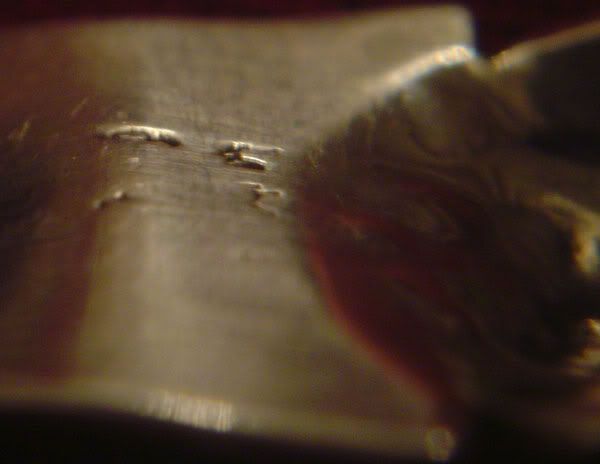Page 1 of 1
Appealeing to the tongs experts
Posted: Wed Jul 01, 2009 2:34 pm
by rat-tail
Hi - this is a real puzzle. I recently bought this intriguing pair of silver tongs and wondered if the experts could tell me about the three-part construction and estimate a period for them. My own guess is third quarter of the 18th century. They are stamped only with a lion passant (one of those where the top foot comes out of the lion's head) and a makers mark which is unfortunately hopelessly rubbed - it looks like what I call a double-barreled partnership. And the marks, positioned as they were weren't easy to photograph. They are somewhat flimsy - and have had a repair halfway up the one side. Would it be safe to say that the more single construction was favoured because this is more durable. - Thanks frank



.
Posted: Wed Jul 01, 2009 6:09 pm
by Granmaa
I'm far from an expert in tongs, but I'd date them as c.1775.
Miles
.
Posted: Thu Jul 02, 2009 12:34 pm
by rat-tail
Thanks Miles - you've confirmed my guestimate of the period. Frank
.
Posted: Fri Jul 03, 2009 5:06 am
by nigel le sueur
Hi
Miles as usual is spot on with his date :-) , these are a rare pair of Tongs and l believe the correct term is "Concave tongs" they are in fact made in one piece and were made c 1774-1784 (approx) the idea of the shape is to add strength to the arms, as a collector of cast tongs l know only to well of the weakness of the arms and these were no doubt an "answer" to that problem before the mass produced type of the later tongs.
Nigel
.
Posted: Fri Jul 03, 2009 5:28 pm
by rat-tail
Thank you Nigel, would never have found that out - appreciate it. looking at what's left of the lion passant, would I be correct to assume a London maker. Thanks Frank
.
Posted: Sat Jul 04, 2009 8:40 am
by Tongtwister
Hi Frank,
Yes, 1775 is about right - possibly a little earlier but not much. Nigel is quite correct they were made as a single piece. The concavity aimed at lending strength to the flimsy silver.
The lion is a bit of a problem, especially as it is so blurred. I think they are London - the style & quality of the tongs have London written all over them.
Shame the maker's mark is so badly rubbed. I have seen John Faux & George Love marks rubbed & looking a little like this - probably just a guess on my part.
Regards
Graham
.
Posted: Wed Jul 08, 2009 7:40 pm
by salmoned
I'm curious about the length and weight of these tongs. Was this concave style used to decrease the mass of silver required?
.
Posted: Thu Jul 09, 2009 4:01 am
by Tongtwister
Hi,
Well, that's a good question. There is no doubt that this style came out fairly early, around the same time or slightly later than cast tongs, which followed the scissor style sugar nips. Proper rolled silver only really came out around 1775 onwards (with the invention of the rolling mills) from which a piece could be cut and the traditional and far more prolific single piece tongs could be made, hence we start to see them from around that time.
It is possible (but only a supposition) that these concave tongs originated from the silversmith himself beating a piece of silver to make the shape, i.e. not having access to rolled silver. He would then have been much more easily able to shape the silver himself to ensure it had adequate strength.
It is also true that this style of tongs tends to be thinner & lighter therefore reducing the mass of silver used. Definitely a good way to reduce cost. Having said that, there will have been a lot of effort required to shape the silver properly - but then labour was cheap. Which took longer to make - a pair of cast tongs or a pair of concave tongs? Both will have taken far more effort than standard bow style tongs.
We do know that this concave style did not last long. With the advent of quality rolled sheet silver the silversmith could churn out standard shaped tongs very quickly & easily.
A pair of these concave tongs would use about half (or less) the silver used for a pair of cast tongs.
.
Posted: Thu Jul 09, 2009 4:49 pm
by rat-tail
Thanks guys for you input. For info they're about 14.5cm and weigh a fairly light 22 grams. For info I have a pair of Exeter fiddle pattern tongs (1cm longer) of the later construction (1833) and they weigh 38 grams. The Cork tongs Tongtwister helped me identify last year are probably also rolled and the same length - and weigh 28 grams.
Appreciate you info on the construction. Regards Frank
.





